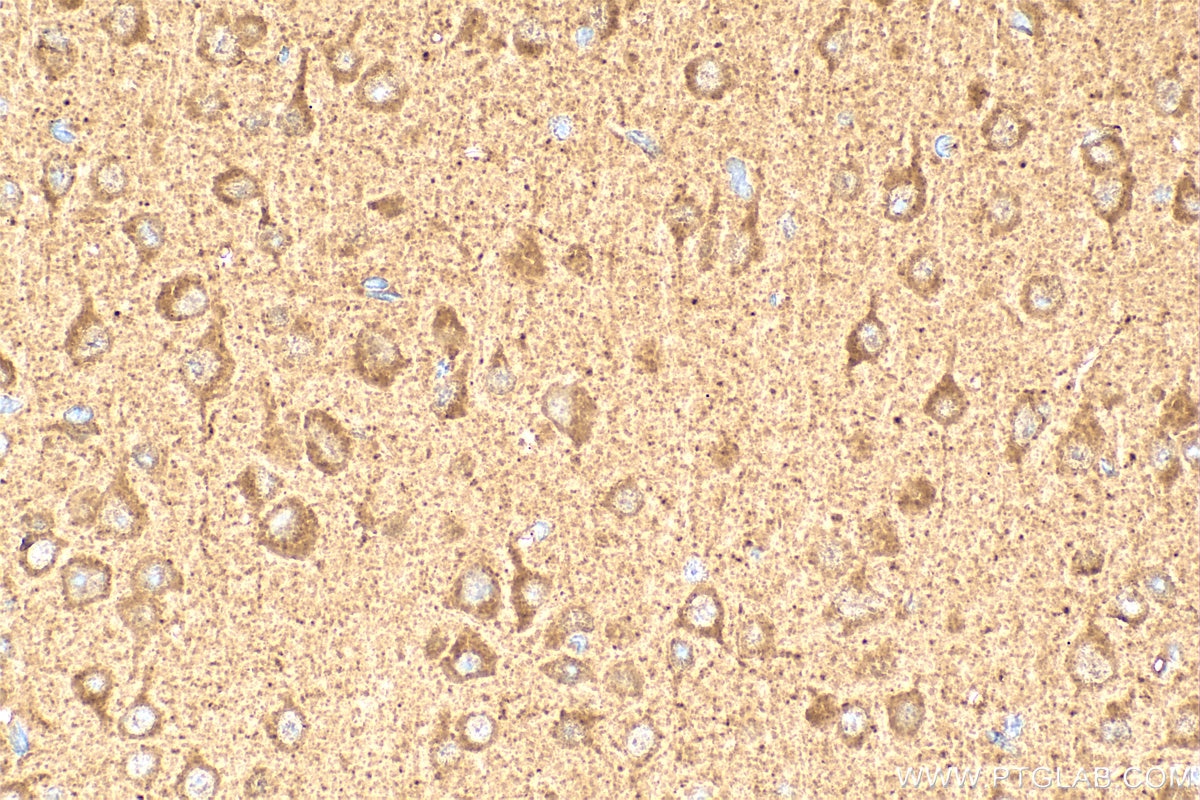Tested Applications
| Positive WB detected in | PC-12 cells, mouse brain tissue, rat brain tissue |
| Positive IHC detected in | mouse brain tissue Note: suggested antigen retrieval with TE buffer pH 9.0; (*) Alternatively, antigen retrieval may be performed with citrate buffer pH 6.0 |
Recommended dilution
| Application | Dilution |
|---|---|
| Western Blot (WB) | WB : 1:1000-1:6000 |
| Immunohistochemistry (IHC) | IHC : 1:200-1:800 |
| It is recommended that this reagent should be titrated in each testing system to obtain optimal results. | |
| Sample-dependent, Check data in validation data gallery. | |
Published Applications
| KD/KO | See 1 publications below |
| WB | See 1 publications below |
Product Information
20531-1-AP targets RUNDC3A in WB, IHC, ELISA applications and shows reactivity with human, mouse, rat samples.
| Tested Reactivity | human, mouse, rat |
| Cited Reactivity | mouse |
| Host / Isotype | Rabbit / IgG |
| Class | Polyclonal |
| Type | Antibody |
| Immunogen |
CatNo: Ag14393 Product name: Recombinant human RUNDC3A protein Source: e coli.-derived, PGEX-4T Tag: GST Domain: 272-405 aa of BC006194 Sequence: VRLRESQLKDLEAENRRLQLQLEEAAAQNQREKRELEGVILELQEQLTGLIPSDHAPLAQGSKELTTPLVNQWPSLGTLNGAEGASNSKLYRRHSFMSTEPLSAEASLSSDSQRLGEGTRDEEPWGPIGSSEPN Predict reactive species |
| Full Name | RUN domain containing 3A |
| Calculated Molecular Weight | 446 aa, 50 kDa |
| Observed Molecular Weight | 45-50 kDa |
| GenBank Accession Number | BC006194 |
| Gene Symbol | RUNDC3A |
| Gene ID (NCBI) | 10900 |
| RRID | AB_10695757 |
| Conjugate | Unconjugated |
| Form | Liquid |
| Purification Method | Antigen affinity purification |
| UNIPROT ID | Q59EK9 |
| Storage Buffer | PBS with 0.02% sodium azide and 50% glycerol, pH 7.3. |
| Storage Conditions | Store at -20°C. Stable for one year after shipment. Aliquoting is unnecessary for -20oC storage. 20ul sizes contain 0.1% BSA. |
Protocols
| Product Specific Protocols | |
|---|---|
| IHC protocol for RUNDC3A antibody 20531-1-AP | Download protocol |
| WB protocol for RUNDC3A antibody 20531-1-AP | Download protocol |
| Standard Protocols | |
|---|---|
| Click here to view our Standard Protocols |
Publications
| Species | Application | Title |
|---|---|---|
Cell Death Discov RUNDC3A regulates SNAP25-mediated chemotherapy resistance by binding AKT in gastric neuroendocrine carcinoma (GNEC).
| ||
New Phytol CPK10 protein kinase regulates Arabidopsis tolerance to boron deficiency through phosphorylation and activation of BOR1 transporter |








